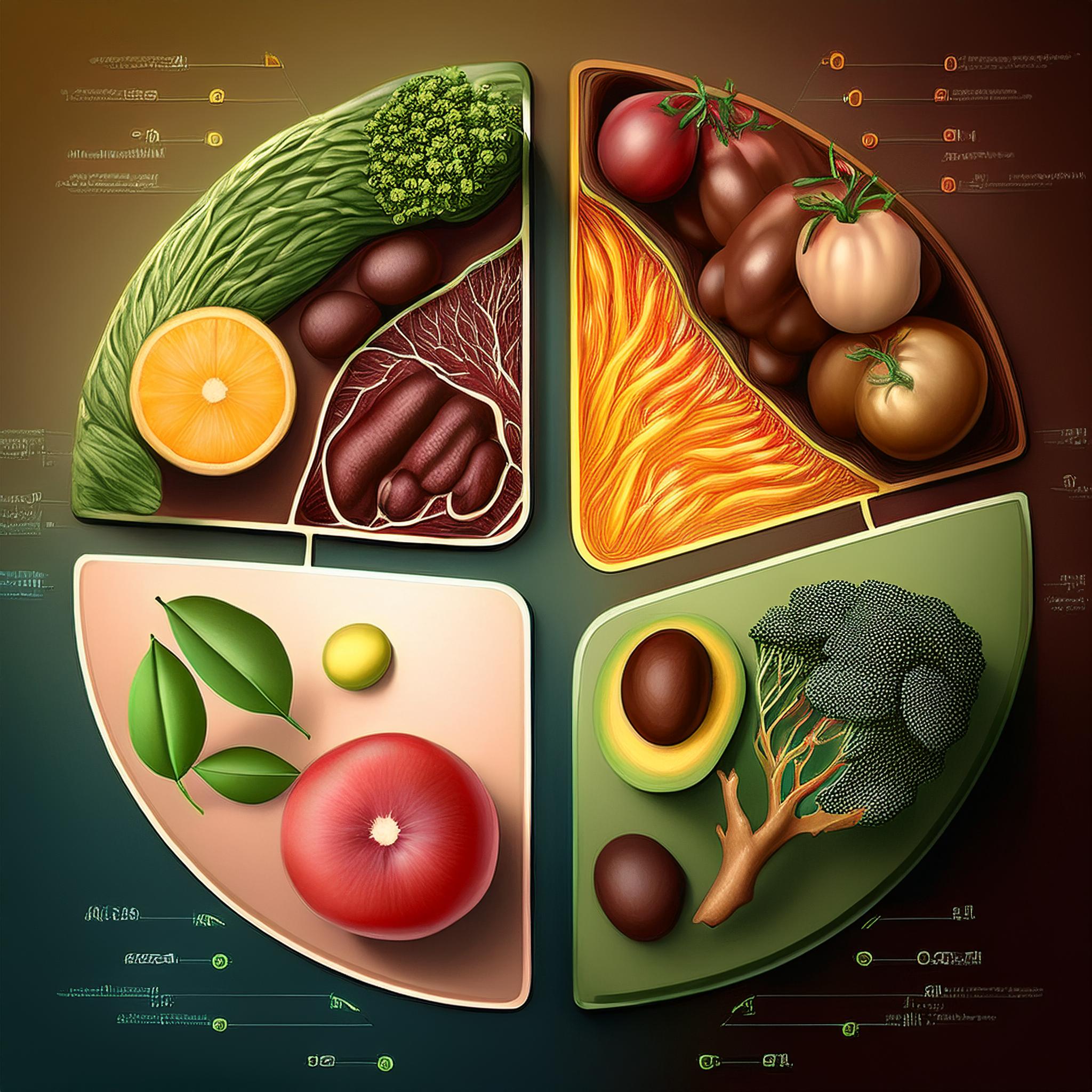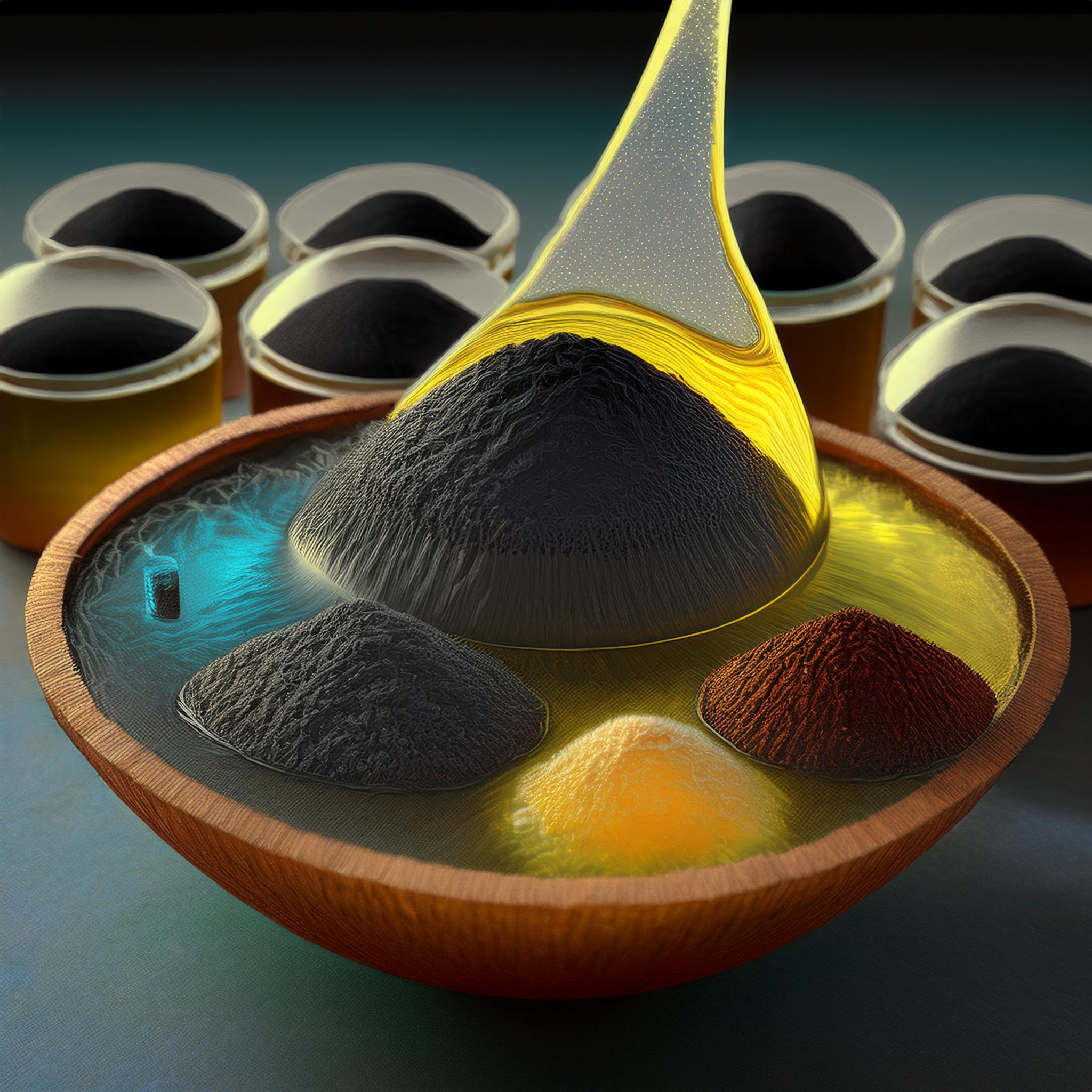Effectiveness of Javanese Turmeric (Curcuma Xanthorrhiza Roxb) to Improve Eating Behavior Among Anorexia Children in Bogor
Downloads
Anorexia or lack of desire to eat and loss of appetite is a common issue among children. Some herbs were successfully tested to increase eating behavior, including Javanese turmeric or temulawak. This study aimed to examine the effectiveness of Javanese turmeric on eating behavior scores among children with anorexia. The study was done in Bogor Regency in January 2024. There were 30 children aged 4 to 6 years included in this study who were selected by the non-probability sampling method. Among them, 15 children were categorized into intervention or case group, and the rest as control group. The intervention is giving Javanese turmeric pudding. Before and after giving the intervention, the parents were asked to answer the children's eating behavior questionnaire (CEBQ). The finding by using paired and independent t-tests in this study revealed that Javanese turmeric is significantly effective in improving eating behavior (p-value <0.05) comparing pre and post-tests. This study can encourage the policymakers to do more education and promote of effectiveness of Javanese turmeric for health at the village and school levels. Future studies can improve the food variety made from Javanese turmeric to be more interesting for children.
Alfarisi, F., Safitri, H., Marsila, N., & Lisyanti, D. (2022). Study of Computation and Phytochemicals Content in Temulawak (Curcuma Xanthorrhiza) as Antibacteria. Epicentrum. https://doi.org/10.54482/epicentrum.v1i01.66
Basuki, F., Yuniarti, T., An, R., & Hastuti, S. (2020). Preliminary Study of Various Intervals and Administration of Feed Enriched With Turmeric and Garlic on the Growth Performance of Catfish. E3s Web of Conferences. https://doi.org/10.1051/e3sconf/202014701010
Broad, J., Forbes, L., Darlington, G., Ma, D. W., & Haines, J. (2021). Child Involvement in Meal Preparation and Grocery Shopping Is Associated With Lower Levels of Food Fussiness Among Young Children. Applied Physiology Nutrition and Metabolism. https://doi.org/10.1139/apnm-2021-0390
Cahyani, R. D., Satyantini, W. H., Nindarwi, D. D., & Cahyoko, Y. (2021). Addition of Turmeric in Feed on Growth and Survival Rate of Nilasa Red Tilapia (Oreochromis Sp.). Iop Conference Series Earth and Environmental Science. https://doi.org/10.1088/1755-1315/679/1/012042
Diana, R., Rachmayanti, R. D., Khomsan, A., & Riyadi, H. (2022). Influence of Eating Concept on Eating Behavior and Stunting in Indonesian Madurese Ethnic Group. Journal of Ethnic Foods. https://doi.org/10.1186/s42779-022-00162-3
Dubois, L., Bédard, B., Goulet, D., Prud’homme, D., Tremblay, R. E., & Boivin, M. (2022). Eating Behaviors, Dietary Patterns and Weight Status in Emerging Adulthood and Longitudinal Associations With Eating Behaviors in Early Childhood. International Journal of Behavioral Nutrition and Physical Activity. https://doi.org/10.1186/s12966-022-01376-z
Guthrie, C. A., Rapoport, L., Sanderson, S., & Wardle, J. (2001). Development of the Children’s Eating Behaviour Questionnaire. The Journal of Child Psychology and Psychiatry and Allied Disciplines, 42(7), 963–970. https://doi.org/DOI: 10.1017/S0021963001007727
Guzek, D., Skolmowska, D., & Głąbska, D. (2021). Associations Between Food Preferences, Food Approach, and Food Avoidance in a Polish Adolescents’ COVID-19 Experience (PLACE-19) Study Population. Nutrients. https://doi.org/10.3390/nu13072427
Hadi, S. P. I., & Primasari, N. A. (2023). Pelatihan Terapi Komplementer Untuk Pencegahan Stunting Bagi Kader Posyandu Balita Di Desa Dukun. Jurnal Kreativitas Pengabdian Kepada Masyarakat (Pkm). https://doi.org/10.33024/jkpm.v6i4.9217
Hariadi, H., Sagita, D., Asri, Hidayat, Rahmawati, L., RCecep, E. A., & Saepurahman. (2022). Effect of Additional Balance of Temulawak Extract (Curcuma Xanthorrhiza Roxb) on Organoleptic Characteristics and Antioxidant Content, of Clove (Eugenia Aromaticum), and Cinnamon (Cinanomum Burmanni) Extracts as Functional Drinks. https://doi.org/10.2991/978-94-6463-086-2_30
Harris, H. A., Jansen, E., Mallan, K., Daniels, L., & Thorpe, K. (2018). Concern Explaining Nonresponsive Feeding: A Study of Mothers’ and Fathers’ Response to Their Child’s Fussy Eating. Journal of Nutrition Education and Behavior. https://doi.org/10.1016/j.jneb.2018.05.021
Idham, H. (2021). Pelatihan Pembuatan Puding Sedot Temulawak Sebagai Peningkat Imun Anak Di Masa Pandemi. Nuras J. Pengabdi. Kpd. Masy. https://doi.org/10.36312/njpm.v1i1.5
Khan, S., Arif, M., Laraib, H., Naqvi, S. N., Shah, O. A., Farooq, U., Sami‐Ullah, M., & Khan, G. A. (2024). The effect of turmeric and black pepper powder incorporated in breakfast on postprandial glycemia, appetite, palatability, and gastrointestinal well‐being in normal‐weight adults. Food Science & Nutrition.
Lee, B., Kwon, C.-Y., Lee, S. H., & Chang, G. T. (2022). Herbal Medicine for the Treatment of Anorexia in Children: A Systematic Review and Meta-Analysis. Frontiers in Pharmacology. https://doi.org/10.3389/fphar.2022.839668
Ma, X., Yang, X., Yin, H., Wang, Y., Tian, Y., Long, C. B., Chen, B., Dong, F., Wang, Z., Liu, T., & Gu, X. (2022). Stunting Among Kindergarten Children in China in the Context of COVID-19: A Cross-Sectional Study. Frontiers in Pediatrics. https://doi.org/10.3389/fped.2022.913722
Markides, B., Laws, R., Hesketh, K., Maddison, R., Denney-Wilson, E., & Campbell, K. (2022). A Thematic Cluster Analysis of Parents’ Online Discussions About Fussy Eating. Maternal and Child Nutrition. https://doi.org/10.1111/mcn.13316
Minarni, M., Asyhar, R., Juliana, D., Yudha, Y. S., & Nurcholis, W. (2023). Short Communication: Analysis of Rhizome Color and Phytochemical Content of 10 Accessions of Curcuma Zanthorrhiza Roxb. In Jambi, Indonesia. Biodiversitas Journal of Biological Diversity. https://doi.org/10.13057/biodiv/d240119
Mulyaningsih, S., Ishak, F., & Muhamad, Z. (2022). Pengaruh Pemberian Buah Pepaya Terhadap Peningkatan Nafsu Makan Pada Balita Di Wilayah Kerja Puskesmas Tilango. Media Publikasi Promosi Kesehatan Indonesia (Mppki). https://doi.org/10.56338/mppki.v5i3.2212
Novitasari, P. D., & Wanda, D. (2020). Maternal Feeding Practice and Its Relationship With Stunting in Children. Pediatric Reports. https://doi.org/10.4081/pr.2020.8698
Panjaitan, J., Girsang, E., & Chiuman, L. (2022). Effectiveness of Temulawak (Curcuma Xanthorrhiza) Ointments as Wound Healing Agents in Wistar Rats. Jurnal Teknologi Laboratorium. https://doi.org/10.29238/teknolabjournal.v11i2.376
Purbomartono, C., Emawati, R., Mulia, D. S., & Haryanto, H. (2023). The Effectiveness of Dietary Fucoidan Compared to the Combination of Fucoidan With Turmeric on the Growth of African Catfish (Clarias Gariepinus). Proceedings Series on Social Sciences & Humanities. https://doi.org/10.30595/pssh.v8i.603
Rahman, R. F. (2023). Karakteristik Sensori, Kimia, Dan Aktivitas Antioksidan Kue Egg Roll Dengan Penambahan Tepung Temulawak (Curcuma Xanthorrhiza Roxb). Jurnal Agroindustri Halal. https://doi.org/10.30997/jah.v9i3.10019
Rahmat, E., Lee, J., & Kang, Y. M. (2021). Javanese Turmeric (Curcuma Xanthorrhiza Roxb.): Ethnobotany, Phytochemistry, Biotechnology, and Pharmacological Activities. Evidence-Based Complementary and Alternative Medicine. https://doi.org/10.1155/2021/9960813
Rizkaprilisa, W., Hapsari, M. W., Anggraeni, N., Murti, P. D. B., & Mahardika, A. (2022). Pelatihan Pembuatan Makanan Anti Stunting Untuk Anak Di Kampung Nelayan Tambak Rejo. Jurnal Pengabdian Masyarakat (Abdira). https://doi.org/10.31004/abdira.v2i4.192
Septiana, A. T. (2020). The Effect of Addition of Ginger Extract and Kencur Extract on the Physicochemical Properties of Instant Temulawak and the Sensory Properties of the Beverage. Jurnal Gizi Dan Pangan Soedirman. https://doi.org/10.20884/1.jgps.2019.3.2.2274
Smith, B., Rogers, S., Blissett, J., & Ludlow, A. (2020). The Relationship Between Sensory Sensitivity, Food Fussiness and Food Preferences in Children With Neurodevelopmental Disorders. Appetite. https://doi.org/10.1016/j.appet.2020.104643
Suniarti, D. F., Sarwono, A. T., & Rosyana, M. (2019). Effectiveness of a Javanese Turmeric Ethanol Extract for Eradicating Streptococcus Mutans and Porphyromonas Gingivalis Biofilms. International Journal of Applied Pharmaceutics. https://doi.org/10.22159/ijap.2019.v11s1.ar157
Supariasa, I. D. N., Fajar, I., Khairuddin, K., & Adelina, R. (2023). Analyzing Nutritional Factors That Affect Toddler’s Stunting in Malang Regency, Indonesia. Open Access Macedonian Journal of Medical Sciences. https://doi.org/10.3889/oamjms.2023.10199
Tugiyanti, E., Susanti, E., Ismoyowati, I., & Rosidi, R. (2022). Effect of Nucleotides and Turmeric Extract on Blood Protein and Body Weight of Broiler Kept in Open Cages. Iop Conference Series Earth and Environmental Science. https://doi.org/10.1088/1755-1315/1001/1/012005
Utami, R. A., Setiawan, A., & Fitriyani, P. (2019). Identifying Causal Risk Factors for Stunting in Children Under Five Years of Age in South Jakarta, Indonesia. Enfermería Clínica. https://doi.org/10.1016/j.enfcli.2019.04.093
Warmasari, N. W. M., Ernawati, D. K., Indrayani, A. W., Dewi, N. W. S., & Jawi, I. M. (2020). Antibacterial Activity From Temulawak Extract (Curcuma Xanthorrhiza Roxb) on Growth Inhibition of Staphylococcus Epidermidis in Vitro. Jurnal Epidemiologi Kesehatan Komunitas. https://doi.org/10.14710/jekk.v5i1.6909
Wijhati, E. R., Nuzuliana, R., & Pratiwi, M. L. E. (2020). Stunting Incidence in Tegalrejo Yogyakarta. https://doi.org/10.2991/ahsr.k.200723.042
Wilapangga, A., Rahmat, D., & Rachmaniar, R. (2023). Formulasi Dan Evaluasi Sediaan Gel Nanopartikel Ekstrak Temulawak (Curcuma Xanthorrhiza) Sebagai Tabir Surya. Indonesian Journal of Pharmaceutical Education. https://doi.org/10.37311/ijpe.v3i1.18854
Wulandary, W., & Sudiarti, T. (2021). Nutrition intake and stunting of under-five children in Bogor West Java, Indonesia. J Food Sci Nutr, 7(104), 2.
Copyright (c) 2024 JURNAL INFO KESEHATAN

This work is licensed under a Creative Commons Attribution-NonCommercial-ShareAlike 4.0 International License.
Copyright notice
Ownership of copyright
The copyright in this website and the material on this website (including without limitation the text, computer code, artwork, photographs, images, music, audio material, video material and audio-visual material on this website) is owned by JURNAL INFO KESEHATAN and its licensors.
Copyright license
JURNAL INFO KESEHATAN grants to you a worldwide non-exclusive royalty-free revocable license to:
- view this website and the material on this website on a computer or mobile device via a web browser;
- copy and store this website and the material on this website in your web browser cache memory; and
- print pages from this website for your use.
- All articles published by JURNAL INFO KESEHATAN are licensed under the Creative Commons Attribution 4.0 International License. This permits anyone to copy, redistribute, remix, transmit and adapt the work provided the original work and source is appropriately cited.
JURNAL INFO KESEHATAN does not grant you any other rights in relation to this website or the material on this website. In other words, all other rights are reserved.
For the avoidance of doubt, you must not adapt, edit, change, transform, publish, republish, distribute, redistribute, broadcast, rebroadcast or show or play in public this website or the material on this website (in any form or media) without appropriately and conspicuously citing the original work and source or JURNAL INFO KESEHATAN prior written permission.
Permissions
You may request permission to use the copyright materials on this website by writing to jurnalinfokesehatan@gmail.com.
Enforcement of copyright
JURNAL INFO KESEHATAN takes the protection of its copyright very seriously.
If JURNAL INFO KESEHATAN discovers that you have used its copyright materials in contravention of the license above, JURNAL INFO KESEHATAN may bring legal proceedings against you seeking monetary damages and an injunction to stop you using those materials. You could also be ordered to pay legal costs.
If you become aware of any use of JURNAL INFO KESEHATAN copyright materials that contravenes or may contravene the license above, please report this by email to jurnalinfokesehatan@gmail.com
Infringing material
If you become aware of any material on the website that you believe infringes your or any other person's copyright, please report this by email to jurnalinfokesehatan@gmail.com.





























